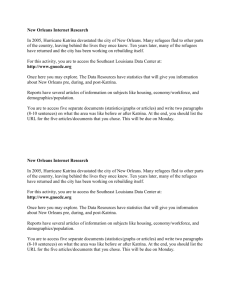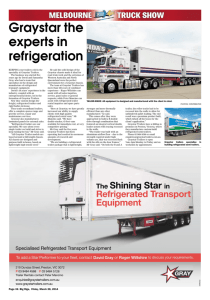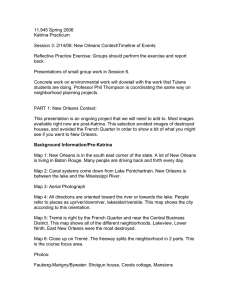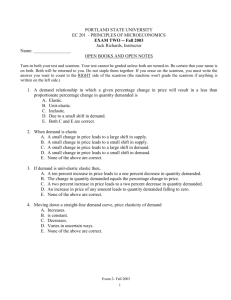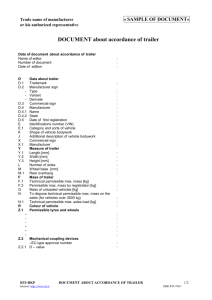Document
advertisement
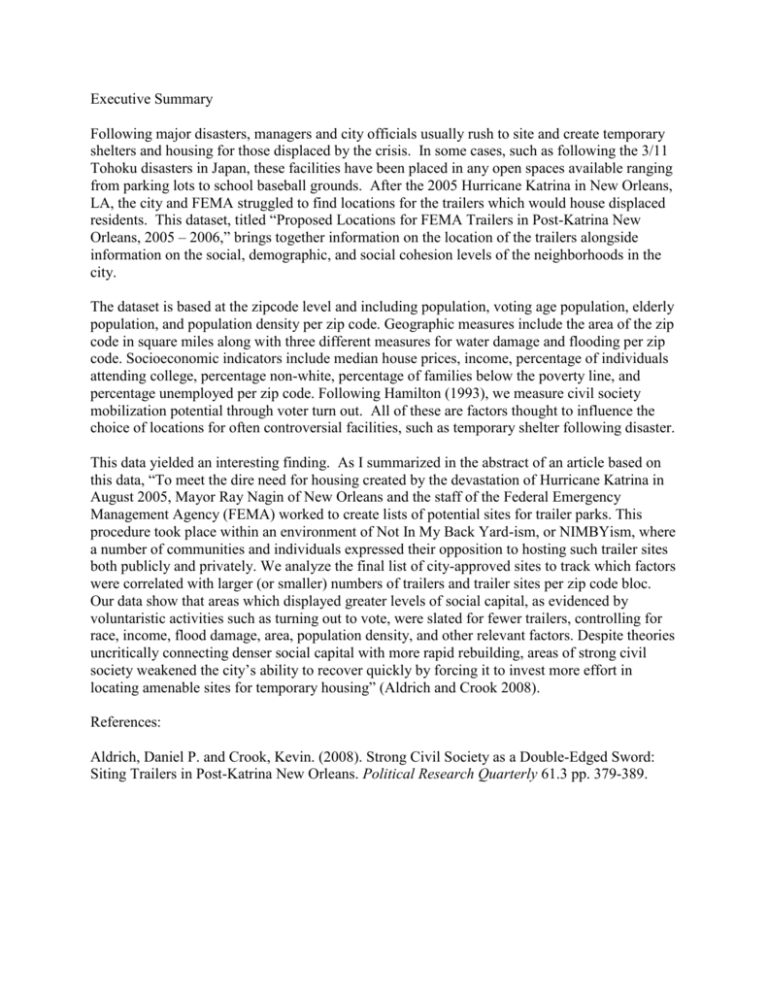
Executive Summary Following major disasters, managers and city officials usually rush to site and create temporary shelters and housing for those displaced by the crisis. In some cases, such as following the 3/11 Tohoku disasters in Japan, these facilities have been placed in any open spaces available ranging from parking lots to school baseball grounds. After the 2005 Hurricane Katrina in New Orleans, LA, the city and FEMA struggled to find locations for the trailers which would house displaced residents. This dataset, titled “Proposed Locations for FEMA Trailers in Post-Katrina New Orleans, 2005 – 2006,” brings together information on the location of the trailers alongside information on the social, demographic, and social cohesion levels of the neighborhoods in the city. The dataset is based at the zipcode level and including population, voting age population, elderly population, and population density per zip code. Geographic measures include the area of the zip code in square miles along with three different measures for water damage and flooding per zip code. Socioeconomic indicators include median house prices, income, percentage of individuals attending college, percentage non-white, percentage of families below the poverty line, and percentage unemployed per zip code. Following Hamilton (1993), we measure civil society mobilization potential through voter turn out. All of these are factors thought to influence the choice of locations for often controversial facilities, such as temporary shelter following disaster. This data yielded an interesting finding. As I summarized in the abstract of an article based on this data, “To meet the dire need for housing created by the devastation of Hurricane Katrina in August 2005, Mayor Ray Nagin of New Orleans and the staff of the Federal Emergency Management Agency (FEMA) worked to create lists of potential sites for trailer parks. This procedure took place within an environment of Not In My Back Yard-ism, or NIMBYism, where a number of communities and individuals expressed their opposition to hosting such trailer sites both publicly and privately. We analyze the final list of city-approved sites to track which factors were correlated with larger (or smaller) numbers of trailers and trailer sites per zip code bloc. Our data show that areas which displayed greater levels of social capital, as evidenced by voluntaristic activities such as turning out to vote, were slated for fewer trailers, controlling for race, income, flood damage, area, population density, and other relevant factors. Despite theories uncritically connecting denser social capital with more rapid rebuilding, areas of strong civil society weakened the city’s ability to recover quickly by forcing it to invest more effort in locating amenable sites for temporary housing” (Aldrich and Crook 2008). References: Aldrich, Daniel P. and Crook, Kevin. (2008). Strong Civil Society as a Double-Edged Sword: Siting Trailers in Post-Katrina New Orleans. Political Research Quarterly 61.3 pp. 379-389.

